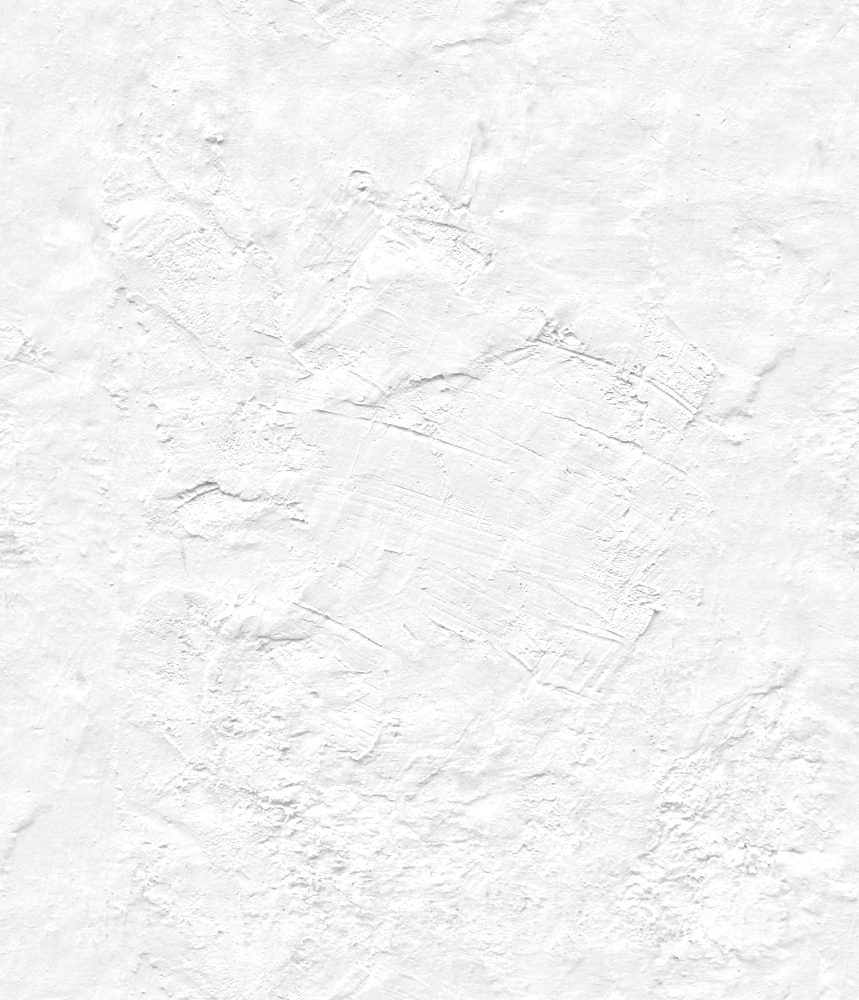Textured Plaster
Category
Finishes
Download
Edit
A creamy white, worn appearance, this textured plaster can be used to cost effectively smooth over rough textured walls such as blockwork and stock brick or to create cool, calm, open atmospheres, while providing a neutral backdrop to man-made and synthetic materials, colours and textures. The riven, slightly rough textured landscape is likely created by the plaster being applied directly onto masonry without layers to level the roughness of the substrate. Some areas appear thicker and heavier than others, with some sections having been replaced or covered over with extra plaster. The coarseness of the substrate is evident in certain areas, and is likely to be what caused the plasterer to scrape certain portions due to depth variation beneath their trowel, causing an uneven, scored look. Air bubbles and striations are evident at other points, suggestive of a quick skim, saving time and money, or to accentuate the stone beneath without displaying the stone in full, perhaps due to existing damage, or to prevent future wear and tear.
The cement based nature allows it to be utilised internally as a decorative finish, or in some external cases as a durable, weather resistant protective coating for masonry and panelling in exposed, rough climatic conditions. While render and plaster coatings are both usually similar in terms of constituent ingredients and properties, render is the term given when it it is applied externally, while plaster normally denotes indoor use. This textured plaster is commonly used on interior and some external masonry walls where the masonry is too worn to be visually appealing, but still of sufficient quality to maintain structural integrity.
Dating back to at least 7500BC to Indian temples, Egyptian tombs and extensive use in Roman architecture, plaster is a protective coating applied to walls and ceilings to protect the surfaces from damage, add a decorative coating to a feature wall, or provide a smooth finish to an otherwise rough structure such as concrete blockwork, stock bricks or timber sheeting.
Cementitious plaster is a relatively modern material and is renowned for its fast setting, hard and durable characteristics. Plaster is a mixture of sand and Portland cement with water, which in this case is a dull white tone either from the cement, or pigmented before application with dyes or the use of different aggregates, or painted after installation to the desired colour, while it can be treated differently to achieve a coarse, utilitarian appearance; a smooth, uniform finish; or a more decorative, textured coating to highlight or mimic concrete or natural stone. Due this plaster being aggregate based however, the entire wall or element to which it is applied must be coated in one go to avoid differences in tone, thickness and consistency, as evidenced by the strong variation between rough, smooth, raised and lower surfaces. Cement based plasters are also more prone to scrapes, scratches and light damage, often necessitating a complete re-plastering of the area to blend out blemishes, as evident in the light peach or pink tones at the edges. The smoother areas possess some light striated markings, likely from the edge of a trowel, with a slightly weathered appearance, while the looseness of the appearance lends itself to being painted quickly without too much care and attention in the future.
A seamless finishes texture with a textured plaster surface. Seamless textures can be tiled repeatedly across a surface without visible seams making them useful for architectural drawings and 3D models. This image can be used as a SketchUp texture, Revit material or imported into Photoshop for use in 2D illustrations. A high resolution version of this texture is available, as well as CAD hatches and PBR maps with Architextures Pro.

